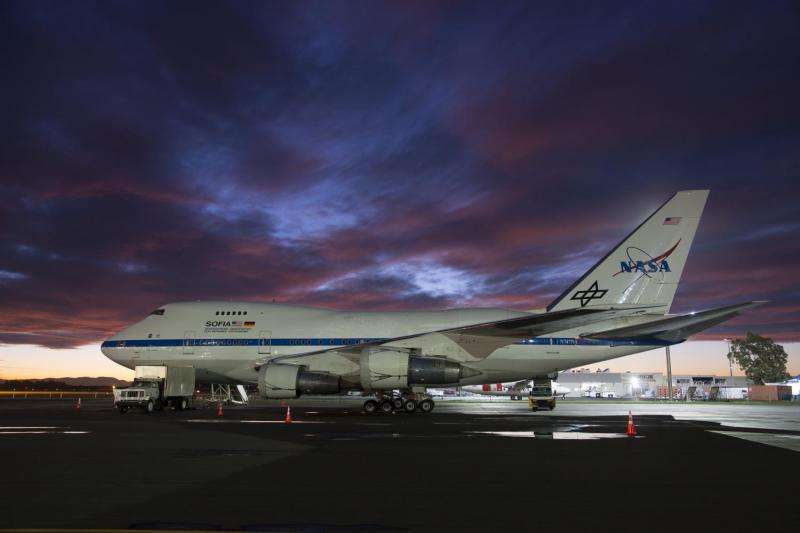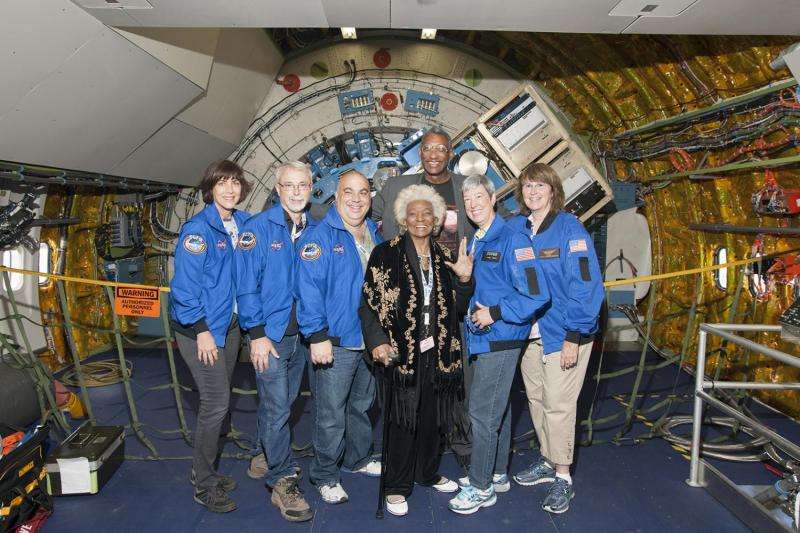SOFIA completes busy year, highlights of 2015

2015 was an exciting year for NASA's flying observatory, the Stratospheric Observatory for Infrared Astronomy, or SOFIA. By flying at altitudes of more than 40,000 feet, above more than 99% of the water vapor in Earth's atmosphere, SOFIA can make observations with its 2.5-meter diameter infrared telescope and crew of pilots and scientists that no other current ground or space observatory can.
Here are some highlights of the year:
Racing into Pluto's Shadow
As Pluto passed in front of a distant star, it cast a faint shadow on Earth. By flying in that shadow SOFIA was able to study the dwarf planet and its atmosphere. SOFIA was the only observatory able to observe this event directly from the center of this shadow, which fell over the Southern Pacific Ocean. This observation was very timely, helping to validate similar data collected by the New Horizons spacecraft as it made its nearest approach to Pluto two weeks later on July 14.
Inspiring the next generation
More than thirty educators flew on SOFIA as part of the Airborne Astronomy Ambassador (AAA) program in 2015. These educators partner with SOFIA astronomers onboard and take what they learn about the scientific discovery process and all facets of SOFIA's mission into their classrooms and communities to inspire students to pursue careers in science, technology, engineering and math fields.
Actress and science education advocate Nichelle Nichols flew with a group of Airborne Astronomy Ambassadors. Nichols played Lt. Uhura on Star Trek and used her role to recruit women and other underserved populations for NASA and into various science careers. During the flight she answered questions about SOFIA online and sent messages to students, continuing to inspire the next generation of scientists.

Clues to how earth got its water
SOFIA made the first detection of water vapor in gas ejecting from a newly forming star, protostar AFGL 2591, demonstrating the potential for SOFIA and its EXES (Echelon-Cross-Echelle Spectrograph) instrument to help scientists understand how water was incorporated into Earth and other planets.
Missing link between supernovae and planet formation
A team using SOFIA discovered that supernovae can produce a substantial amount of the material from which planets, like Earth, can form. Until now, scientists were unsure if the dust particles produced by supernovae would survive the subsequent inward "rebound" shock waves. The SOFIA observations reveal that the dust survived the shock wave and may eventually form new stars and planets.
SOFIA's first exoplanet observations
SOFIA observed a planet outside of our solar system (an exoplanet) as it passed in front of a star. This type of mini-eclipse is called a "transit." Transits are difficult to observe, but these findings indicate that SOFIA can measure the sizes of transiting giant planets with remarkable accuracy.
Observing the Southern skies
SOFIA spent five weeks flying out of Christchurch, New Zealand, to study celestial objects that are more easily observed from southern latitudes. Observations included examining star formation and evolution processes in the Milky Way and nearby galaxies such as the Magellanic Clouds, and studying the atmosphere on the dwarf planet Pluto. SOFIA will be returning to Christchurch in 2016 for another series of southern sky observations.
Coming in 2016
Many more observations are planned for next year, including studying the water on Mars, star formation processes and searching for signs of planet formation around stars.
Provided by NASA




















